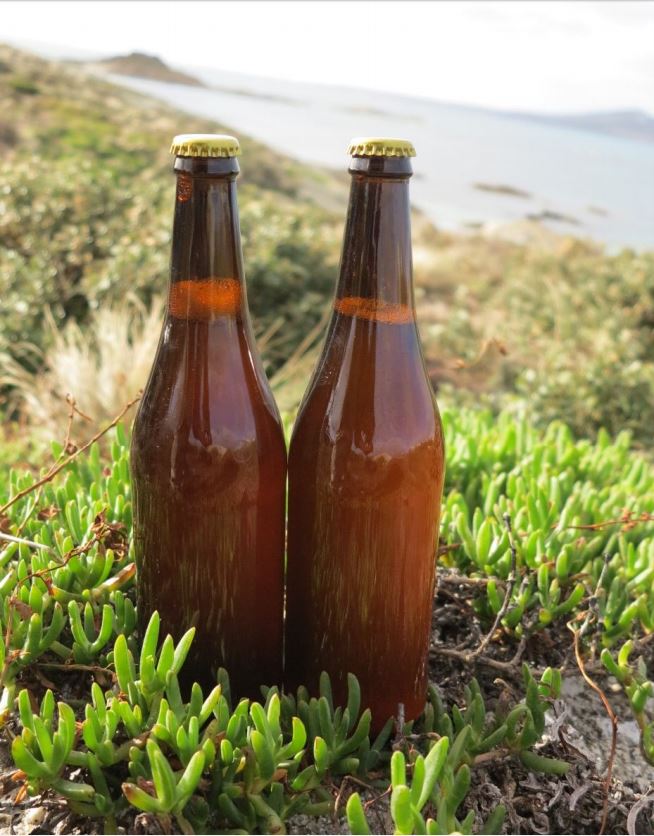Oldest Beer Brewed from Shipwreck's 220-Year-Old Yeast Microbes

Yeast microbes from the world's oldest bottle of beer — a 220-year-old bottle found in one of Australia's earliest shipwrecks — are being used to create a new, modern beer with the characteristic taste of the 18th-century brew.
The yeast was grown from the contents of a bottle of beer recovered from the wreck of the Sydney Cove, a British trading ship that got caught in a storm near the island of Tasmania, off Australia's south coast, in 1797 while on its way from Calcutta to the prison colony at Port Jackson, now the city of Sydney.
The crew of the Sydney Cove survived by grounding the sinking ship on a tiny island off northern Tasmania, now called Preservation Island, which is part of the inspiration for the name of the recreated beer: Preservation Ale. [See Photos of the Recreated 220-Year-Old 'Preservation Ale']
The researchers used the yeast to brew a mild-tasting beer using a traditional recipe from the time, and they say it has a distinct flavor.
"It's got quite a sweet taste — some people have described it as almost a cider or fresh taste — which has come from the yeast," said project leader David Thurrowgood, a conservator and chemist at the Queen Victoria Museum at Launceston in Tasmania.
The researchers also uncovered a historical account of a celebrated English beer from the time that was known for its sweet, cider-like flavor, similar to the beer brewed from the reanimated yeast.
"That was quite a surprise, but having found that reference, and to have that particular taste come out in the beer ... it showed that the beer did actually have a distinctive taste at the time that we're only rediscovering now," Thurrowgood told Live Science.
Get the world’s most fascinating discoveries delivered straight to your inbox.
But beer aficionados will have to wait a while longer to sample the 220-year-old taste: Thurrowgood said several brewing companies are keen to market Preservation Ale, but so far, the entire stock consists of a few bottles brewed for his research.
Beer on board
The yeast microbes used to brew the recreated beer were grown from samples taken from one of 26 beer bottles found in the hold of the Sydney Cove wreck during excavations by marine archaeologists in the 1990s.
A single unopened bottle from the wreck now enjoys pride of place at the Queen Victoria Museum as the world's oldest bottle of beer — the nearest contender being a 133-year-old bottle of lager in the Carlsberg Museum in Denmark, Thurrowgood said.
DNA tests show the shipwrecked yeast microbes are related to yeast species used in so-called Trappist ales brewed in monasteries in Europe, and Thurrowgood thinks the bottles contained a premium beer exported from England for military officers at Port Jackson.
Bottles of wine, brandy and gin were also found aboard the Sydney Cove, as well as several casks of cheaper beer for mass consumption, the researchers said. [Raise Your Glass: 10 Intoxicating Beer Facts]
The scientists from Australia, Belgium, France and Germany have revived five distinct species of yeast microbes from the shipwrecked beer bottle, as well as several species of bacteria, which will provide rare information about the microorganisms in human diets from a time before the Industrial Revolution in Europe.
"People talk about autoimmune diseases and other issues [relating to] the fact that we have quite a clean diet today, whereas in the past we had a diet full of microbes," Thurrowgood said. "This is one of the few chances we've got to actually test those microbes, and actually see what they were."
Shipwreck survivors
Thurrowgood and his colleagues plan further studies of the bottles of wine recovered from the shipwreck, which may also hold microorganisms that can be revived after 220 years.
"We can definitely see dead cells within the wine bottles, and we're much less likely to find live materials in there, but you never know until you've done the work," he said.
The future of Preservation Ale, meanwhile, is at the center of commercial discussions that the researchers hope will develop into revenue to preserve the museum's important collection of artifacts from the Sydney Cove wreck and the survivors' camp sites on Preservation Island, the researchers said.
Thurrowgood added that the possibilities include establishing a mini brewery at the historic museum buildings in Launceston, or creating a homebrew beer based on the 18th-century yeast strain.
After the Sydney Cove ran aground in February 1797, a party of survivors set out in an open boat to reach the colony at Port Jackson. The voyage took them across Bass Strait, between Tasmania and the Australian mainland, where they were wrecked again on the coast.
The voyagers then faced an overland trek of more than 370 miles (600 kilometers) through unknown territory peopled by both friendly and hostile aboriginal tribes. Of the 17 individuals who set out, just three made it to Port Jackson in May 1797, according to an official letter by the colony’s governor, John Hunter.
"They were the first Europeans to do that trek, so in terms of early colonial history, it was an enormous trip and tale of survival — I don't know how they did it," Thurrowgood said.
Original article on Live Science.
Tom Metcalfe is a freelance journalist and regular Live Science contributor who is based in London in the United Kingdom. Tom writes mainly about science, space, archaeology, the Earth and the oceans. He has also written for the BBC, NBC News, National Geographic, Scientific American, Air & Space, and many others.


